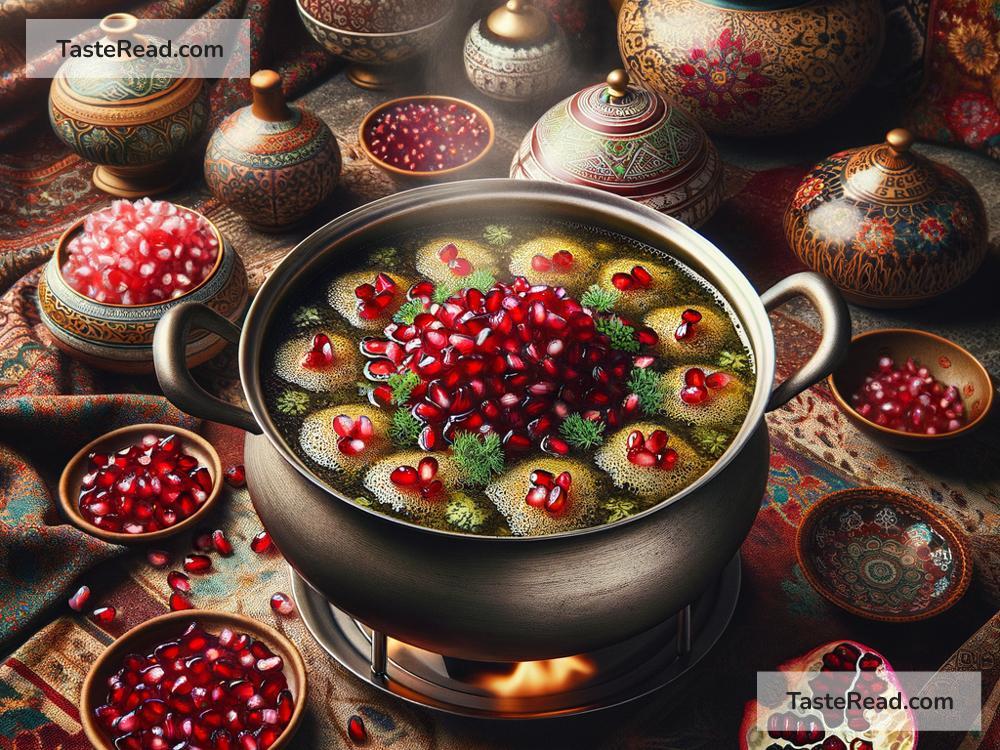How the Iranian Fesenjan Became a Celebration of Persian Cuisine
In the rich tapestry of world cuisines, few dishes tell a story as vividly as Fesenjan. This traditional Iranian dish, simmered with love and tradition, is a testament to the rich culinary heritage of Persia. Fesenjan, with its unique blend of flavors, has journeyed from the royal Persian courts to dinner tables around the world, becoming a symbol of Persian cuisine and culture. But what makes this dish so special? Let’s delve into the delightful and aromatic world of Fesenjan.
At its heart, Fesenjan is a stew made primarily with pomegranate syrup, ground walnuts, and meat—usually chicken, duck, or sometimes lamb. The dish is known for its distinctive sweet and sour taste, owed largely to the pomegranate, and a rich nuttiness from the walnuts. It is often served with rice, allowing the grain to soak up its flavorful sauce, creating a meal that is deeply satisfying and uniquely Persian.
The Origins of Fesenjan
Fesenjan has roots that stretch back over a millennium, highlighting its significance in Persian culture. Historical texts suggest that versions of this dish were prepared for royal banquets in ancient Persia, making it one of the oldest recipes that have been continuously made to this day. It’s interesting to note that Fesenjan reflects the culinary philosophy of ancient Persians, who balanced meals with ingredients representing different elements and qualities, such as hot, cold, dry, and moist, blending them to create dishes that are as nourishing as they are delicious.
A Celebration of Persian Flavors
What makes Fesenjan a true celebration of Persian cuisine is its intricate blend of flavors. The primary ingredient, pomegranate syrup, or molasses, offers a tangy sweetness that is rare in other cuisines. This is complemented by the rich, earthy texture of ground walnuts, adding depth and body to the stew. Depending on the cook’s preference, Fesenjan can lean more towards sweet or sour, showcasing the versatility and balance of Persian culinary traditions.
Cooking Fesenjan is a labor of love. It requires patience and attention, as the stew needs to simmer gently until it thickens and the flavors meld together perfectly. This slow cooking process is a hallmark of many Persian dishes, emphasizing the importance of time-honored techniques in creating the dish’s characteristically rich flavors.
Fesenjan Across the Globe
Today, Fesenjan is enjoyed not only in Iran but across the world. Its unique flavor profile has intrigued and delighted food enthusiasts globally, serving as a delectable introduction to Persian culinary arts. International chefs and home cooks alike have embraced Fesenjan, experimenting with its recipe to suit local tastes while staying true to its Persian roots.
Moreover, Fesenjan’s popularity underscores the growing interest in Middle Eastern cuisines, characterized by their vibrant flavors and use of fresh ingredients. As food cultures become ever more intricated and shared, dishes like Fesenjan play a vital role in cultural exchange, allowing people to explore new tastes and traditions from the comfort of their kitchens.
The Cultural Significance of Fesenjan
Beyond its delicious taste, Fesenjan is steeped in cultural significance. It is often prepared for special occasions and celebrations, symbolizing joy, prosperity, and the bounty of the harvest. The dish is also a proud representation of Persian hospitality, as sharing a meal in Iranian culture is a gesture of friendship and respect.
In addition to its cultural role, Fesenjan is a reminder of the importance of tradition in culinary arts. It connects us to the past, to the generations of cooks who have lovingly prepared this dish for their families and communities. It also inspires us to preserve and celebrate these traditions, ensuring they continue to enrich our lives and tables for years to come.
Conclusion
Fesenjan, with its rich flavors and deep cultural significance, is more than just a dish; it’s a celebration of Persian cuisine and a testament to the enduring appeal of Iran’s culinary heritage. In each spoonful, we find stories of the past, the artistry of generations of cooks, and the joy of shared meals. So, the next time you savor this beautiful stew, remember that you’re not just enjoying a meal, but partaking in a tradition that spans centuries, a delicious link to the history and heart of Persia.


